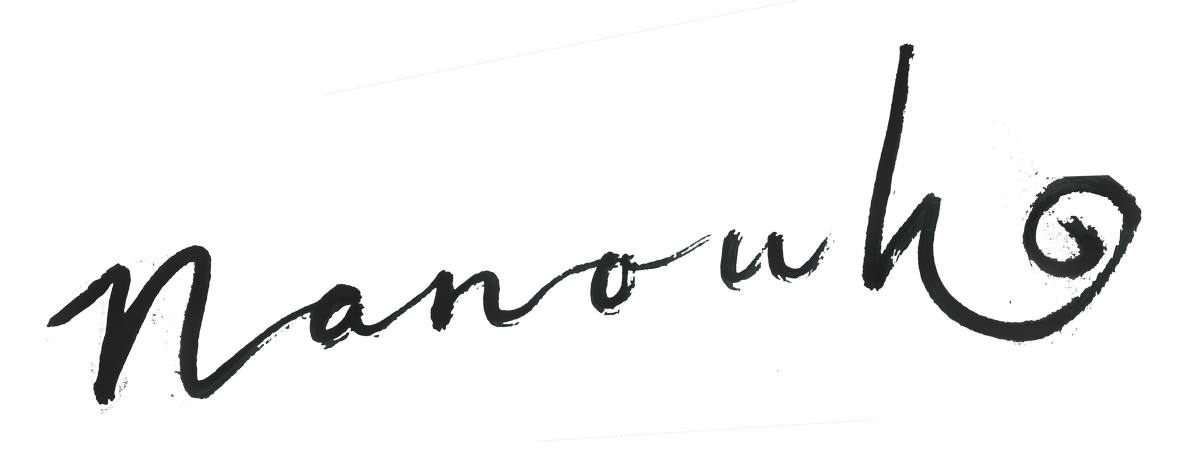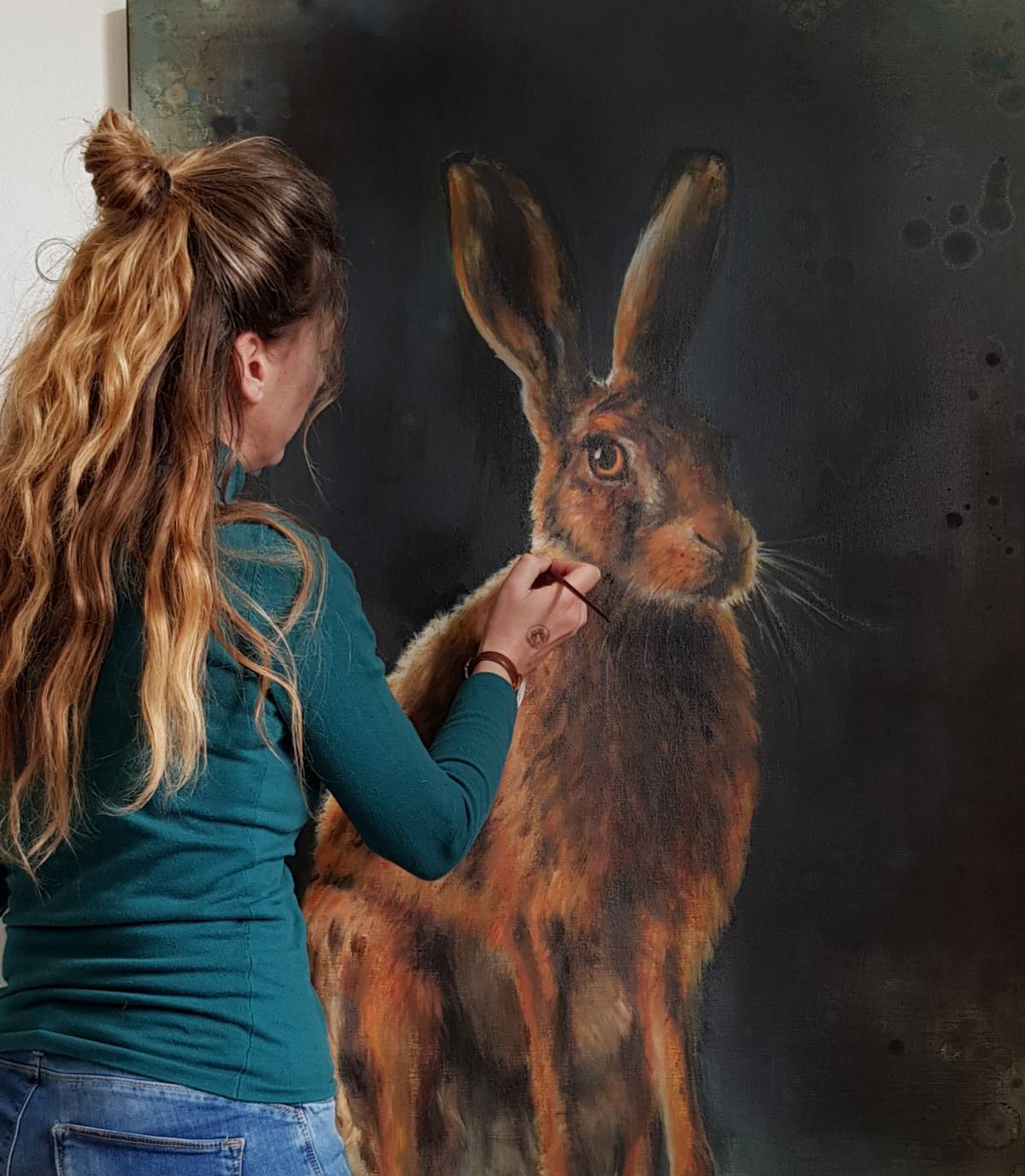Nanouk Weijnen
Biography
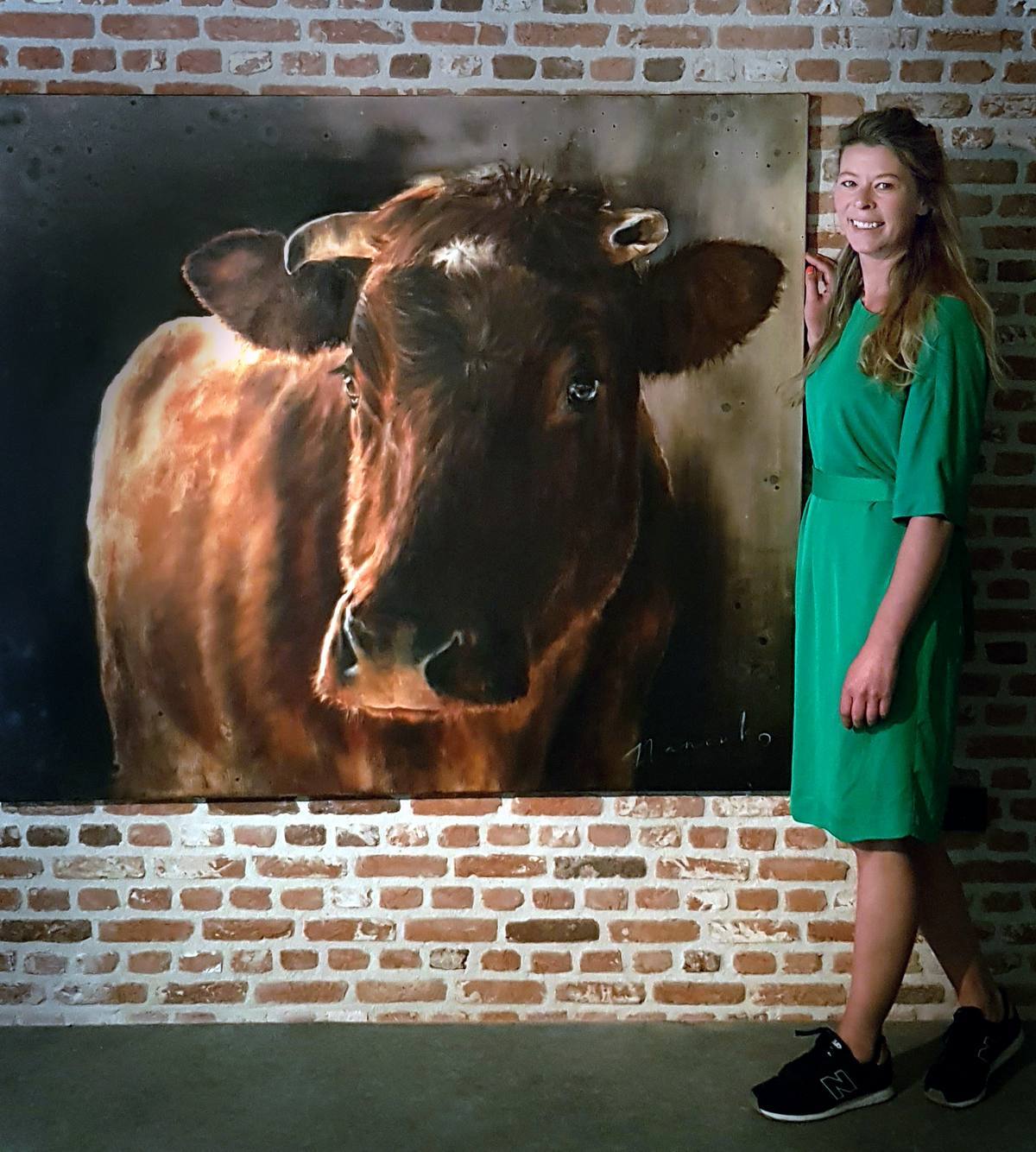
Nanouk Weijnen
Painter and sculptor Nanouk Weijnen grew up in Velp, Noord- Brabant, at the Friesian horses stud farm of her parents. This way and by her father beeing a judge of Friesian horses, she learned to look objectively to all animals at an early age, searching for the right shapes and proportions of these savage and simultaneously graceful looking animals.
It is not surprising that she, after her training at the academy in Tilburg, grazed monumental paintings to this animal. During her career she has been further increasing painting (agriculture) animals and pets, such as rabbits, chickens, cows and dogs. In time she began painting native wildlife and occasionally an exotic animal, like a lion from a zoo.
Weijnen is convinced that animals play a much bigger part in our lives than we realize.
People surround themselves with animals, but at the same time the distance between humans and animals has increased. With her work she wants to pay tribute to the animals and create a platform for raising awareness.
It bothers her that animals are being used as merchandise in a ruthless manner.
The work of Weijnen is all about the emotion that an animal evokes.
She tries to bring the animal to life by crawling in its skin and in this way giving a face to the quirky character of it.
She prefers studying a proud English fighting bantam with a fine physique and long legs, than an ordinary hen.
The pig often seems the underdog of the animal kingdom, it is seen as lazy and unclean.
Weijnen more sees it as a moving and fascinating subject, a pig is an intelligent, social and curious creature.
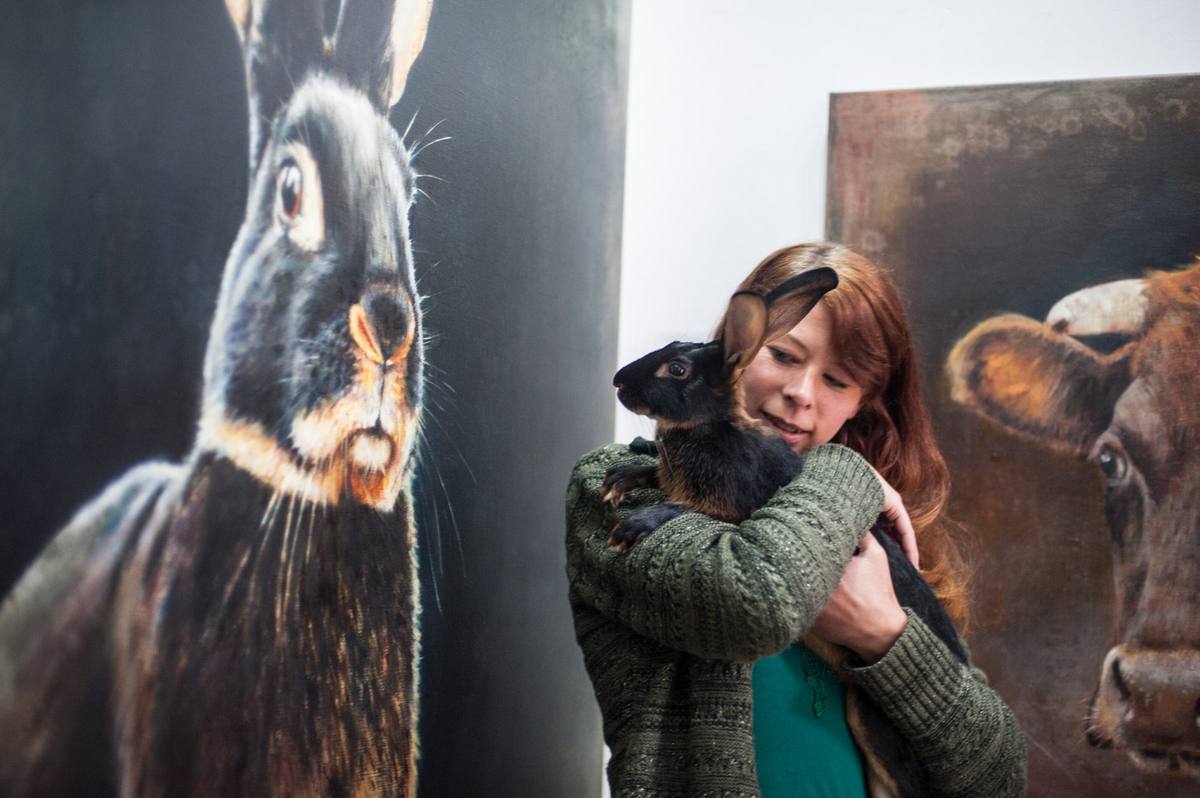
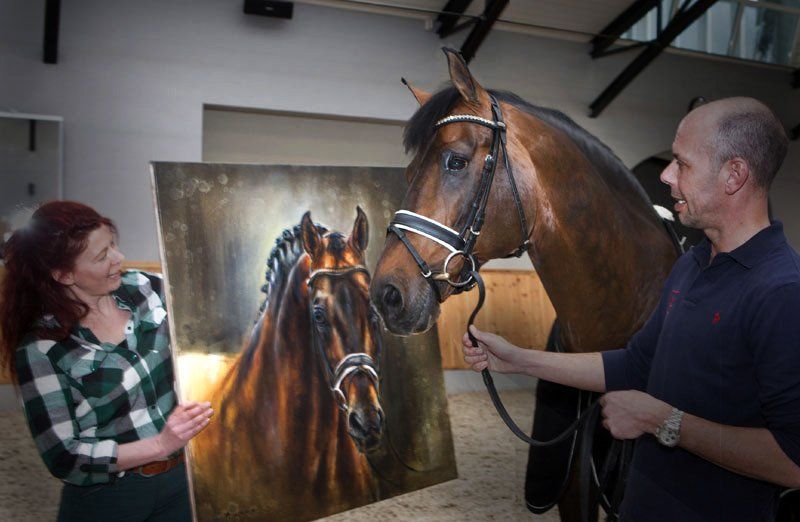
As an artist Nanouk uses the camera as a sketchbook, with a trained eye she takes her time to register the specific nature of the animal. At one glance through her lens she sees a suitable posture or a human expression, she sometimes waits for a long time for the right moment.
With the carefully chosen pictures she goes to work in her atelier. Her method is very labor-intensive.
She wants to know the animals well and studies them thoroughly.
The animals are being portrayed perfect and in large format, thru this the viewer is coming so close to the animals that it’s becoming an individual with recognizable emotions and traits.
By this extreme humanization of animals derives the work identity and meaning.
The works have a critical impact about the absurdity which is dealt with animals in the west.
With her humane animal portraits the artist confirms the continuing alienation from nature.
Her work gives the signal that the human does not let the animal be itself anymore, the animal is completely domesticated. Her realistic works are undeniably an expression of her mastership.
The velvet finishes of the fur and shining eyes, such as the Hare reminiscent of baroque paintings, where in craftsmanship and virtuosity were demonstrated.
Weijnen paints in the tradition of the old masters from dark to light.
After a first layer of acrylic paint, she mixes various media including oilpaint on to the canvas.
Thereby she creates for her so well known backgrounds in her animal portraits, which form a center between rest and movement.
Weijnen feels inspired by the work of Michaël Borremans, who his bringing his backgrounds to life by his way of painting.
Within Weijnen's work the animals seem to step out of the painting.
To create even more uniqueness she has developed a technique whereby different painting media interact in order to produce a particular type of stain pattern. In the second layer this pattern is becoming part of the composition. It forms a kind of aura around the animal.
Also the sketchiness, the tight brushwork and the sober colors of Borremans are a great role model for her work.
His subjects are not ironed out yet realistic. The work of Weijnen also is the opposite of photographic or refined.
In terms of technique and light use Rembrandt is her big example. With a special lamp she puts her subjects in Rembrandt lighting. Other artists which are inspiring Weijnen are Théodore Géricault en Rosa Bonheur.
Gericault painted horses with an abundance of expression and movement. Bonheur painted animals equivalent to humans.
In Bonheur's work animals have a human expression, even as in the work of Weijnen.
In addition Bonheur worked with her own animals from a barn bordering on her atelier. Also, therein is to draw a comparison.
Weijnen lives with the animals she paints and sees it as a requirement for getting to know them.The character determines the atmosphere of the animal portrait. She aims to depth and layering and for that reason she works a lot with oilpaint.
She brings layer upon layer, making her work sometimes getting a bit of a pasty character.
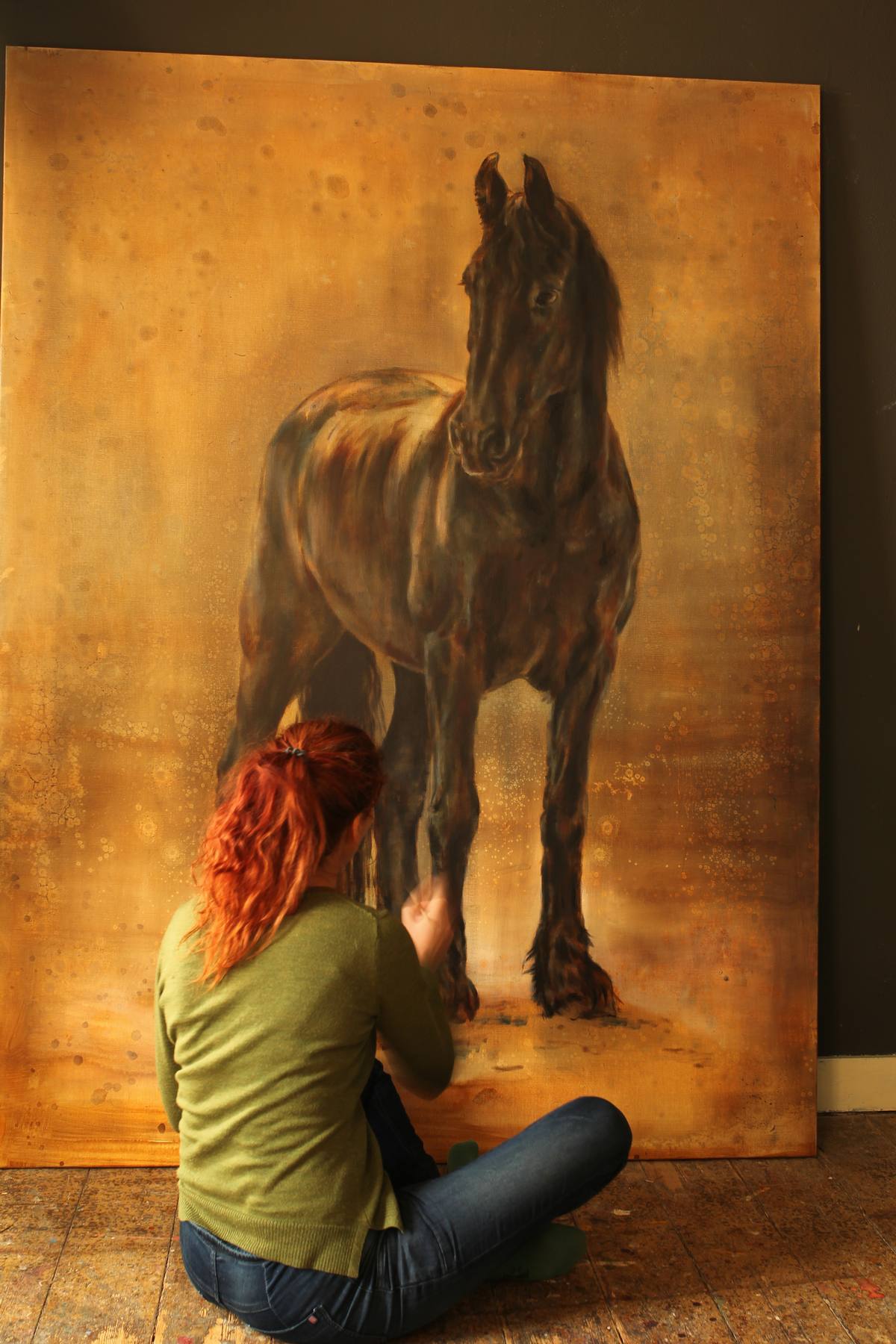
Weijnen’s sculptures translate the human traits of the animal similarly. They are modeled portraits, not just a copy of the original. The images have a certain partly coarseness by use of materials.
Weijnen’s working order is to make pictures of each side of the subject to impose a complete 3D image.
She welds a frame, sets up wooden blocks with iron wires around it and then starts modeling the sculpture with clay.
Just like in her paintings she’s searching for layering and texture. She’s less looking for details in her sculptures though, by example the eyes, nose and paws are shown much coarser. Her sculptures are being made in plastic or bronze. She takes great care in the patina of her sculptures.
Nanouk Weijnen [Velp, 1973] studied at the Art Academy in Tilburg, followed the teachers course of drawing and painting in Nijmegen and the sculpture art at NIKO Academy of visual arts and performing arts, Neerpelt, Belgium. Weijnen exhibited her work at The Netherlands ( Holland ) and abroad, including “Kasteel Tongelaar”, Mill. “Kunsthuis van het Oosten”, Enschede. Equitana Essen, Germany and “De Fabriek”, Eindhoven. She also provides an illustrated column in the Dutch country life magazine “Landleven”. Her work is part of several private and corporate collections.
Weijnen works autonomously and commissioned.
